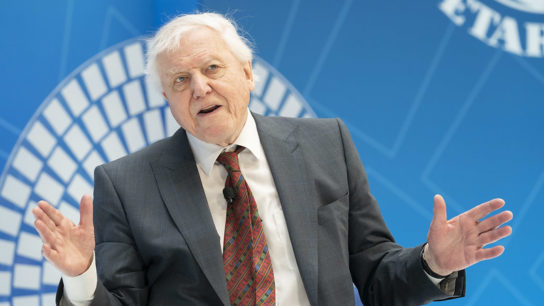Just hours after taking office, US President Joe Biden has moved to rejoin the Paris Agreement as well as impose a moratorium on oil leasing in the Arctic National Wildlife Refuge, much to the delight of environmentalists who say that it is a signal to the world that the US has returned to the fight against climate change.
—
What is Happening?
- Biden is directly reversing former president Donald Trump’s pro-industry decision to remove the US from the Paris Agreement. Trump labelled the agreement a “total disaster” that would harm American competitiveness by enabling “a giant transfer of American wealth to foreign nations that are responsible for most of the world’s pollution.”
- Biden notified the UN of his decision before the end of the day, with re-entry set to take effect 30 days later.
- Biden made no secret of his intention to rejoin the agreement throughout his campaign.
- In an executive order on Wednesday, Biden told agencies to review and address Trump-era policies “that were harmful to public health, damaging to the environment, unsupported by the best available science or otherwise not in the national interest.” The review includes automobile standards and appliance efficiency standards.
- Other measures to be reviewed include those governing seismic oil surveys in the Gulf of Mexico, allowing roads to be built through Alaska’s Tongass National Forest and a rule that narrowed the scope of government agency reviews of how their decisions affect the environment.
- Other actions the Biden transition announced include: directing the Environmental Protection Agency and Transportation Department to consider revising automobile fuel-economy and tailpipe emissions standards, ordering the Interior Department to review monument boundaries that were shrunk, including Utah’s Bears Ears National Monument, which was reduced to about 220 000 acres from its original 1.4-million-acres and halting the cross-border Keystone XL oil pipeline by revoking the permit Trump awarded.
- At the 2005 ratification of the Paris Agreement, then-president Barack Obama pledged that the US would reduce greenhouse gas emission by 26-28% below 2005 levels by 2025.
- However, organisations including the World Resources Institute have instead advocated a US reduction of as much as 50% over the next decade. Achieving this would require a broad mix of domestic action, including more zero-emissions vehicles and a change in electricity generation to renewables, with roughly 38% currently provided by natural gas. Some actions will also require help from Congress or his federal agencies rewriting rules.
You might also like: Air Pollution Will Lead to Mass Migration- Experts
According to US Climate Campaign Director Sriram Madhusoodanan, the US has an obligation to make reductions in line with its “historical responsibility for fuelling the climate crisis.”
David Waskow, director of the WRI’s international climate initiative, says that the US has some work to do to rebuild trust. He says, “The US has to come back to the international stage with some humility. It needs to understand that it’s been out of the mix for the past four years and throwing obstacles in the path of progress.
Featured image by: Flickr
More to follow…

















